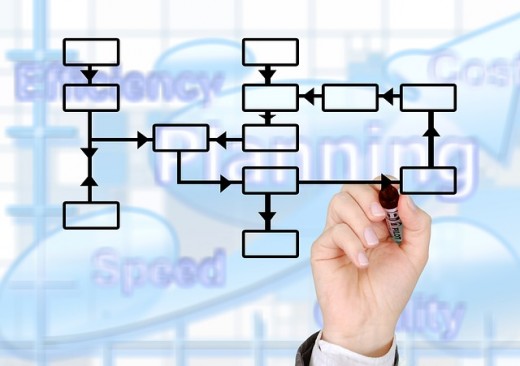PMP Preparation- Projects, Programs and Portfolios- At a Glance
Project management is like juggling three balls – time, cost and quality. Program management is like a troupe of circus performers standing in a circle, each juggling-three balls and swapping balls from time to time.
– G. Reiss

Sometimes, we may found difficulties while explaining the relationships between the projects, programs, and portfolios. Though, the people dealing in these professions may disagree on it. But for the beginners as well as the PMP certification aspirants, it can be very useful to brush up their skills regularly, as rusted armor cannot be of any use.
So, let's discuss today, some of the standard terms and definitions to understand the Projects, Programs, and Portfolios better. The relationships between them and how can we measure the success for each of them.
Different organizations have their own definitions to these terms. Based on their requirements they used to make changes to achieve their strategic goals.

What is Project
A project has a certain durations with a well-defined beginning and definitive end. It can be of few weeks, several weeks, or months depending on the size and complexity. The project ends when its objectives are met, or can be terminated when the need of the project is no longer necessary or when the objectives cannot meet further.
The project starts with a purpose to develop a unique product, service or result, but not limited to it. A construction of a house, setting up a plant or any such process can be taken as a project. Even, when the work is taken to improve or complete an existing process, that can also be considered as a project. But if the work is ongoing in nature, like feeding customers data regularly in a portal, then that is an operational work, not a project work.
What is Program
A program is a structural grouping of two or more similar kinds of projects, subprograms, and other program activities, that can be combined together to achieve certain goals. Similarities do not only means that they are exactly performing same nature of works, they may share the same technologies, resources or of the same client.
The purpose of grouping them is to gain several benefits which cannot be obtainable by managing them individually. The projects or subprograms are grouping together under a program only when it produces certain advantages by managing them together. While a project manager focuses on his project's deliverables, the program manager concentrates on the benefits for the organizations that can be obtained from the group of projects functioning under its arms.

What is Portfolio
A portfolio is a group of related or non-related projects, programs, sub-portfolios or other such work activities based on the strategic objectives of the organization. It is not necessary that they are interdependent; they may have individual aims to meet. But they can be combined together to achieve long-term strategic benefits from a broader perspective.
For example, you can make a portfolio of all the projects and programs having a common insurance domain, though the individual projects are of different customers and of different technologies. Similarly, you can create a portfolio of the project and a program belongs to a particular country, to align with country specific business strategies.

Relationships between them
Looking into their relationships, let's discuss the portfolio first. The Portfolio is like a big umbrella, under which the programs, projects, and sub-portfolios, even other works which are managed in the same approach are grouped together to achieve the strategic objectives. It doesn't matter whether the projects are related or non-related to each other unless managing them together yielding some value to the business.
Programs are the second layer which comes under the Portfolios. It contained the related projects and subprograms under it. For example, two or more projects having objective to develop mobile applications can be grouped into one mobile application program.
Projects are the individual temporary unit having objective to deliver unique product, service or results. The projects which are related to each other are grouped under the program. For example, the projects dealing with Internet of things can be grouped together under one program which deals only with that domain.
One thing needs to be noted here that, a project may not be part of a program but can be grouped in a portfolio.

How Success can be Measured
What is the point of doing this exercise by creating the projects, programs, and portfolios, if you do not get the desired benefits from them? Off course, getting success is the key for all this grouping and forming. But how can you measure the success?
Let's discuss the success criteria of a Project, Program, and Portfolio.
A project's success can be measured by several factors. The deliverables must be fulfilled the expected requirements with quality. Also, other factors such as utilization of budget, profit revenue earned, deliver on time, and above all the level of customer satisfaction. All these factors can be judged carefully to rate the success level of the project.
The success of a program depends upon the success of the projects it contained. They share a common goal, so if any of these projects are unsuccessful then the program may not able to achieve the ultimate goal. So, depending upon the level of contributions of the projects towards the goal of the program and their rate of success, a program can be either success, failure or partial success. The Program Managers ensures that the program is meeting the overall goal, schedules, budget and other benefits it is intended for.
The success of a Portfolio can be measured on the long-term value creation to the investors and the stakeholders. The success factors can be the increased profit margins, reducing overall costs, building the brand of the organization or many such strategic objectives from the organization perspective.
Example of Projects, Programs, and Portfolios
Let's take an example of a software organization to understand the relations between Projects, Programs, and Portfolios.
The company could have many running projects of various domains. Some projects are for developing mobile applications on android and IOS technologies, where some projects are on data analytics to analyze a large amount of data to guide business decisions and to uncover hidden patterns.
The mobile applications projects can be grouped together under a program. The program can contain all the projects dealing with mobile applications. Another program can be formed by grouping all the projects on data analytics work. So, the related projects are grouped together on distinct programs.
Further, both the programs can be grouped together under one portfolio to achieve some strategic benefits. The organization can showcase the portfolio to prove their abilities on dealing with the latest technologies, which in turn enhance the brand value and draw more customers towards the organization.

How changes can be handled
For a Project, it is the job of Project Managers to manage and control the changes. Whenever the Project Managers gets the Change Request, he/she follows the processes to deal with the change requests. Many organizations have well-established change control board to help the projects on processing the change requests.
For a Program, the Program Managers manages the changes from both inside and outside of the program. They analyze the changes with respect to the strategic objectives of the program, and based on that takes the appropriate measures.
For a Portfolio, the Portfolio Managers continuously observe the changes both internally and externally with broader organization's perspective.


How Planning can be made
In a project, the project managers along with the team prepare the plan from high-level requirements. There are certain phases and procedures to create various plans to effectively manage the project throughout the project lifecycle.
At the initiation phase, the Project Managers prepares the Project Charter, the first document to get the official approval to kick off the project. Then there are other plans for all the areas of the project such as Project Management Plan, Scope Management Plan, Schedule Management Plan, Cost Management Plan, Quality Management Plan, Human Resource Management Plan, Communication Management Plan, Risk Management Plan, Procurement Management Plan and Stakeholder Management Plan.
For a Program, the Program Managers develop the overall program plan. He/she creates the high-level plans to manage and control the program to achieve the program's objectives.
The Portfolio Managers thinks on the wider perspective. She/he creates necessary processes and policies to manage the portfolio.
At A Glance
Projects
| Programs
| Portfolios
|
|---|---|---|
Temporary endeavor to develop unique product, service or results
| Related Projects, subprograms are grouped together under the Program
| Portfolio is a group of related or non-related projects and programs based on the business objectives of the organization
|
Related projects are grouped together under a Program
| Purpose of grouping them is to gain certain benefits which cannot be obtainable by managing them individually
| Portfolio Managers continuously observe the changes both internally and externally
|
Manage and control by the Project Managers
| Manage and control by the Program Managers
| Manage and control by the Portfolio Managers
|
Do you ever feel difficulties in explaining the differences between Projects, Programs, and Portfolios?
© 2017 Kishor Mohanty








